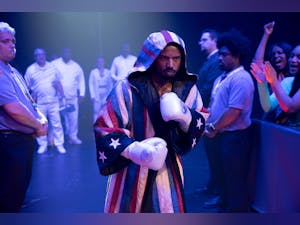From: Silver Screen
“Angkor Awakens: A Portrait of Cambodia” struggles with storytelling
“Angkor Awakens: A Portrait of Cambodia,” is a documentary focusing on the Cambodian genocide led by the Khmer Rouge in 1975 and its effect on present day Cambodia. The documentary focuses on the loss of culture and the Cambodian people coming to terms with their own history. Director Robert H. Lieberman portrays how the Khmer Rouge continues to affect everyday life in Cambodia.
The issues I have with “Angkor Awakens” mostly surrounds my dislike of documentaries. The directors did not create enough interest with the actual story being told. So many different voices were brought in to cover an incredibly detailed and large amount of history in Cambodia, which left audiences either confused or uncaring because of the vast amount of information being fed to them. The story begins all the way back in the ancient times of Cambodia and continues through to the present and even into where the future may take the country.
A large amount and wide variety of interviews and voices can usually help a documentary avoid bias as it allows for multiple accounts of history, both present and future. While this is the case in “Angkor Awakens,” it also detracts from the film. There are too many voices that the audience needs to keep track of. These voices are of individuals that were in the country during the genocide and targeted, as well as their children, who are just experiencing the long term effects of the genocide. There are also many different experts on Cambodia interviewed and even an ex-member of the Khmer Rouge and current prime minister of Cambodia, Hun Sen.
While it is incredibly impressive to be able to conduct interviews with all of these individuals and pull out very interesting thoughts and opinions, that does not equate to a good film. The documentary struggles mainly with its editing, and in turn the actual storytelling within the movie is lacking. There is a constantly changing goal of the film: to educate the youth on the genocide, to simply recount the genocide through different perspectives or to describe present Cambodia and how everybody has been affected by the genocide. While the conclusion of the film seems to be to explain modern day Cambodia through the lens of the genocide, that conclusion gets incredibly fuzzy throughout the course of “Angkor Awakens.”
The changing goal is most easily seen with the cinematic techniques that are apparently forgotten half way through the documentary. Shadow puppets were used extensively in the first half of the film to explain the history of Cambodia, primarily in interviews with children.. They are brought up again to show the brutality of the Khmer Rouge during the genocide. The shadow puppets are also paired with live action recreations of what the interviewees describe. But, these two cinematic techniques are just forgotten about and almost never used again after halfway through the film, showing relatively inconsistent filmmaking.
Robert H. Lieberman can make good films, as shown through his other documentary “They Call it Myanmar: Lifting the Curtain.” However, he does not show his filmmaking abilities with “Angkor Awakens.” Lieberman tells a story that has been told before in much better ways. A surprising number of countries rarely talk about the genocides committed in their countries; Cambodia is not alone in this.
A similar film is “The Act of Killing,” a documentary of an Indonesian hero who was one of the main perpetrators of the 1965 genocide, which tells a much better story cinematically than this film. The story of the Cambodian genocide is something that needs to be told and remembered. I commend Lieberman for his efforts in creating this documentary and his goal of showing how it has greatly affected present day Cambodia. “Angkor Awakens” does tell a very important story, it just does not do it that well cinematically.
Rating: C




